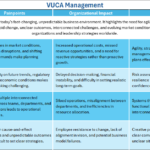How decision-making impacts team performance

How can better decision-making transform team performance?
Have you ever felt stuck between options, unsure of the right course of action, only to realize later that indecision—or the wrong decision—cost you time, trust, or results? In today’s fast-paced work environment, effective decision-making and problem-solving are not just desirable skills; they are essential for leadership success.
In this post, we’ll explore how strong decision-making drives better outcomes, energizes teams, and solves complex problems. By the end, you’ll have practical insights into improving your approach to making decisions and solving problems, supported by a real-world example.
The challenge: decision fatigue and complexity

In modern workplaces, leaders make countless decisions daily—small, tactical ones and larger, strategic ones. Over time, this can lead to decision fatigue, where the quality of decisions deteriorates as mental energy declines. Complexity in team dynamics, markets, or projects often clouds judgment, making even simple decisions feel overwhelming.
The result? Delays, confusion, and inefficiency. These bottlenecks not only stall progress but also erode trust among teams.
The impact of strong decision-making
- Clarity and confidence
Leaders who approach decisions with a structured framework inspire confidence in their teams. Clarity in decision-making sets expectations and minimizes misunderstandings, which improves team alignment. - Empowered teams
Problem-solving isn’t just about fixing issues; it’s about involving the right people at the right time. Leaders who delegate decisions strategically foster a sense of ownership and empowerment within their teams. - Agility in complex situations
Strong decision-makers adapt quickly, breaking down complexity into manageable parts and addressing root causes. This agility is critical for staying competitive in uncertain environments. - Reduced conflict and inefficiency
Many workplace conflicts arise from poor or delayed decisions. A clear, well-communicated decision-making process prevents unnecessary friction and ensures smooth operations.
Key elements of effective decision-making and problem-solving

- Define the problem clearly
Avoid rushing into solutions without fully understanding the issue. Ask, “What’s the real challenge here?” Framing the problem accurately ensures the decision addresses the core issue.- Lean/6Sigma provide great tools for defining a correct problem statement.
- Gather diverse perspectives
Involve stakeholders who bring different viewpoints, knowledge, or expertise. Diverse input often leads to innovative and balanced solutions.- Also here many tools available, like brainstorming, six thinking hats technique, Delphi method, consensus decision making.
- Break down complexity
Simplify decision-making by breaking the issue into smaller, actionable steps. Address one piece at a time while keeping the broader goal in focus. - Weigh trade-offs objectively
Every decision comes with trade-offs. Identify them and evaluate potential outcomes using clear criteria, such as risks, benefits, and alignment with long-term goals. - Communicate the decision effectively
Once a decision is made, communicate it clearly to all involved parties. Transparency builds trust and ensures everyone is on the same page.- See also my blog post on overcoming the leadership communication gap.
- Evaluate and learn from decisions
After implementation, reflect on the decision’s effectiveness. What worked? What didn’t? Continuous learning improves future decision-making.- Use the Kolb-experiential-learning cycle, which is basically about continuous learning from experience, something not only applies to decision making or problem solving. It’s the foundation for continuous improvement, another component we always want to have included.
How coaching can contribute
As a leadership coach, I know how helping leaders in this area supports refining their decision-making frameworks, navigate complex challenges, and empower their teams. This approach includes:
- Facilitating reflection to uncover hidden biases or blind spots in decision-making.
- Encouraging clarity in framing problems and prioritizing actions.
- Strengthening delegation and team involvement to create collaborative problem-solving cultures.
By building these skills, leaders not only make better decisions but also create an environment where their teams can thrive.
Practical example: turning analysis paralysis into action
I came across a practical example of this in some of my coaching sessions. Imagine a manager overseeing a cross-functional project that’s falling behind schedule. The team debates endlessly about which tasks should be prioritized, delaying progress further. Once we discussed the approach, and recognizing the stalemate, the manager takes a structured approach:
- Define the problem: The root issue isn’t the tasks themselves but a lack of clarity on which outcomes are most critical to the project’s success.
- Gather input: The manager gathers insights from key stakeholders to understand dependencies and risks.
- Break down complexity: The tasks are divided into two categories: those that directly impact the project’s deadline and those that can be addressed later.
- Weigh trade-offs: With risks and deadlines in mind, the manager prioritizes tasks that maximize progress within the time available.
- Communicate the decision: The manager shares the plan with the team, explaining the rationale to ensure buy-in.
The result? Tasks are realigned, progress resumes, and the team regains momentum. By taking a systematic, inclusive approach, the manager not only resolves the issue but strengthens trust and efficiency within the team.
Conclusion
Strong decision-making is the cornerstone of effective leadership. By clarifying problems, involving the right people, and taking decisive action, leaders can navigate complexity with confidence and ensure their teams stay engaged and focused.
The next time you’re faced with a tough decision, pause. Ask yourself, “Am I addressing the real issue, and how can I make this process clearer for everyone involved?” With practice, decision-making becomes not just a skill but a source of empowerment for you and your team.
Contact me if you feel I can be of any help with developing your capabilities in these areas




